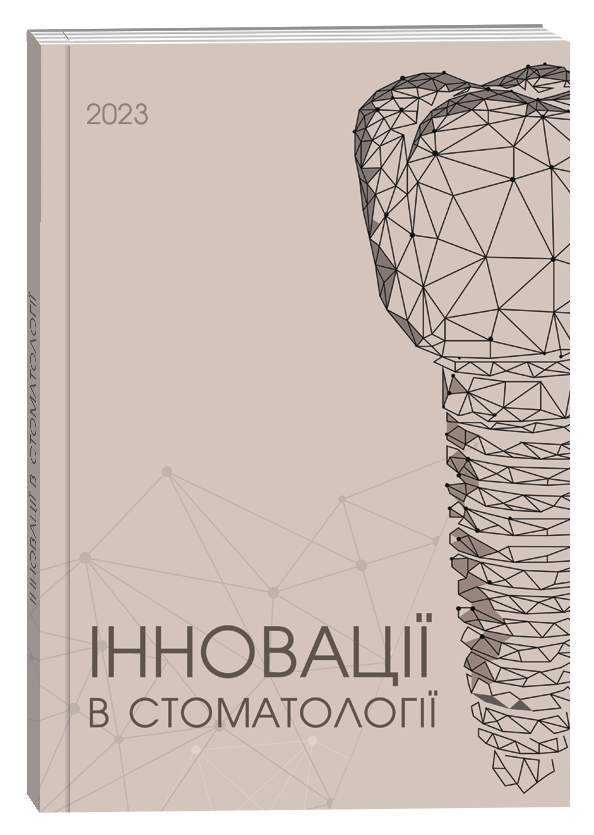POSSIBILITIES OF ARTIFICIAL INTELLIGENCE IN ORTHODONTICS, CURRENT STATUS AND PROSPECTS. LITERATURE REVIEW
DOI:
https://doi.org/10.35220/2523-420X/2025.1.25Keywords:
artificial intelligence, orthodontics, cephalometry, machine learning, examination, treatment planning, diagnosticsAbstract
Introduction. In recent decades, we have witnessed enormous changes in our profession. The emergence of new, more modern technologies in orthodontic treatment, the transition to a fully digital work protocol, new visualization methods – all this is being created and integrated so that clinicians have the opportunity to optimize the workflow and improve their methods of providing orthodontic care to patients. The use of artificial intelligence has grown significantly in recent years to improve the accuracy and efficiency of diagnostics, and this knowledge is the basis for predicting treatment.However, the introduction of these technologies based on artificial intelligence does not change the fact that healthcare professionals, with their own knowledge gained through specialized education and years of experience, are the ones who ultimately have to make the diagnosis and choose the best treatment plan.Methodology and research methods. The purpose of the study is to analyze available sources of scientific and medical information devoted to the application of artificial intelligence in orthodontics. The included studies prove that artificial intelligence is a reliable tool that makes orthodontic treatment faster, more economical, more convenient, and more predictable. In dentistry, artificial intelligence has become popular over the past few decades, particularly in orthodontics, where it is needed for diagnosis, determining the need for treatment, cephalometry, treatment planning, treatment prediction, and orthognathic manipulations.Summary of the main research material. The latest technological innovations in orthodontics, including KPCT and 3D imaging, intraoral scanners, facial scanners, software capabilities for instant dental modeling, and new device developments using robotics and 3D printing, are changing the face of medical care and are rapidly integrating into dentistry. These tools allow for a better understanding of the patient’s anatomy and can create dynamic, patient-specific anatomical reconstructions, thus enabling 3D treatment planning.Conclusions: Despite the great potential of AI in orthodontics to make the diagnostic process more accurate and efficient, working with AI has not yet become a mainstream tool in everyday orthodontic practice. Although AI can increase diagnostic accuracy, it cannot completely replace human intelligence, but it can significantly improve treatment outcomes, increase cost- effectiveness and efficiency.
References
Monill-González, A., Rovira-Calatayud, L., d’Oliveira, N. G., & Ustrell-Torrent, J. M. (2021). Artificial intelligence in orthodontics: Where are we now? A scoping review. Orthodontics and Craniofacial Research, 24 (Suppl. 2), 6–15. https://doi.org/10.1111/ocr.12517
Shan, T., Tay, F. R., & Gu, L. (2020). Application of artificial intelligence in dentistry. Journal of Dental Research, 100(3), 232–244.
Tsolakis, I. A., Tsolakis, A. I., Elshebiny, T., Matthaios, S., & Palomo, J. M. (2022). Comparing a fully automated cephalometric tracing method to a manual tracing method for orthodontic diagnosis. Journal of Clinical Medicine, 11(22), 6854.
Orhan, K., & Jagtap, R. (Eds.). (2023). Artificial Intelligence in Dentistry (pp. 131–141). https://doi.org/10.1007/978-3-031-43827-1_8
Alsubai, S. (2022). A critical review on the 3D cephalometric analysis using machine learning. Computers, 11(11), 154.
Amasya, H., Cesur, E., Yıldırım, D., & Orhan, K. (2020). Validation of cervical vertebral maturation stages: Artificial intelligence vs human observer visual analysis. American Journal of Orthodontics and Dentofacial Orthopedics, 158(6), e173–e179.
Amasya, H., Aydoğan, T., Cesur, E., Kemaloğlu Alagöz, N., Uğurlu, M., Bayrakdar, İ. Ş., et al. (2023). Using artificial intelligence models to evaluate envisaged points initially: A pilot study. Proceedings of the Institution of Mechanical Engineers, Part H: Journal of Engineering in Medicine, 237(6), 706–718. https://doi.org/10.1177/09544119231173165
Orhan, K., Shamshiev, M., Ezhov, M., Plaksin, A., Kurbanova, A., Ünsal, G., et al. (2022). AI-based automatic segmentation of craniomaxillofacial anatomy from CBCT scans for automatic detection of pharyngeal airway evaluations in OSA patients. Scientific Reports, 12(1), 1–9.
Alam, M. K., Abutayyem, H., Kanwal, B., & Shayeb, M. A. L. (2023). Future of orthodontics – A systematic review and meta-analysis on the emerging trends in this field. Journal of Clinical Medicine, 12(2), 532.
Baxi, S., Shadani, K., Kesri, R., Ukey, A., Joshi, C., & Hardiya, H. (2022). Recent advanced diagnostic aids in orthodontics. Cureus, 14(11), e31921.
Gupta, A. (2020). Challenges for computer aided diagnostics using X-ray and tomographic reconstruction images in craniofacial applications. International Journal of Computer Vision and Robotics, 10(4), 360–371.
Elnagar, M. H., Aronovich, S., & Kusnoto, B. (2020). Digital workflow for combined orthodontics and orthognathic surgery. Oral and Maxillofacial Surgery Clinics of North America, 32(1), 1–14.








